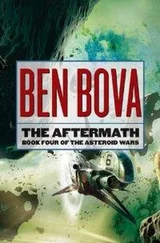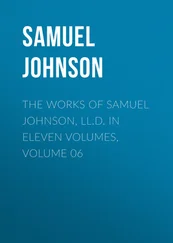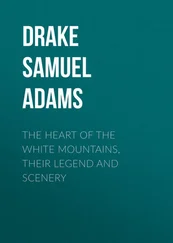Samuel Florman - The Aftermath
Здесь есть возможность читать онлайн «Samuel Florman - The Aftermath» весь текст электронной книги совершенно бесплатно (целиком полную версию без сокращений). В некоторых случаях можно слушать аудио, скачать через торрент в формате fb2 и присутствует краткое содержание. Город: New York, Год выпуска: 2001, ISBN: 2001, Издательство: Thomas Dunne books, Жанр: sf_postapocalyptic, на английском языке. Описание произведения, (предисловие) а так же отзывы посетителей доступны на портале библиотеки ЛибКат.
- Название:The Aftermath
- Автор:
- Издательство:Thomas Dunne books
- Жанр:
- Год:2001
- Город:New York
- ISBN:0-312-26652-9
- Рейтинг книги:5 / 5. Голосов: 1
-
Избранное:Добавить в избранное
- Отзывы:
-
Ваша оценка:
- 100
- 1
- 2
- 3
- 4
- 5
The Aftermath: краткое содержание, описание и аннотация
Предлагаем к чтению аннотацию, описание, краткое содержание или предисловие (зависит от того, что написал сам автор книги «The Aftermath»). Если вы не нашли необходимую информацию о книге — напишите в комментариях, мы постараемся отыскать её.
The Aftermath — читать онлайн бесплатно полную книгу (весь текст) целиком
Ниже представлен текст книги, разбитый по страницам. Система сохранения места последней прочитанной страницы, позволяет с удобством читать онлайн бесплатно книгу «The Aftermath», без необходимости каждый раз заново искать на чём Вы остановились. Поставьте закладку, и сможете в любой момент перейти на страницу, на которой закончили чтение.
Интервал:
Закладка:
“The bombs all detonated at precisely the planned moment, the light so blinding that, as most of you saw, it didn’t make for very interesting television images. There wasn’t much for the commentators to say except Wow, aren’t we proud of our technological genius!”
The astronomer kept her voice even, her emotions steady, as best she could. She periodically fingered her silver bangs away from her eyebrow. No one among the hundreds gathered in the vast ballroom—previously the site of dining and dancing and optimistic lectures—moved or spoke.
“My colleagues”—Jane Warner caught herself—“My late colleagues in Arizona were able to explain to me what happened. As they put it, there was ‘a slight complication.’ One of the rockets had gone astray, following a flight path to the opposite side of the comet—exactly opposite from what was intended. As a result, although the comet was diverted, it wasn’t diverted quite enough, and it remained on a collision course with Earth. Who could have predicted that a backup system would become the cause of such a colossal failure? It was nothing less than the greatest technological screw-up of all time. Some of my friends at the lab thought it might be sabotage. If so, it was surely the Mother of All Suicide Bombings.
“At first, hardly anyone was aware that there was a problem. With all the bombs having detonated on schedule, the mission was an apparent success. And even after the first few experts who were monitoring the situation discovered the mishap, their assumption was that the comet would still miss us by a comfortable distance. But minute by minute, as new readings were taken and new data analyzed, scientists from around the world began to realize that something was wrong. Then they could not reach agreement on revised projections. By the time they reached consensus, calculated the spot where the collision would occur, and reported the appalling news to government leaders, impact was only six hours away. Even then, there were no agreed-upon predictions about what the nature of the cataclysm would be.”
In her mind, Warner heard the anguished voices of her friends and longtime co-workers over the fading telephone connection. They were going to die—and they knew it. For her, on the other side of the world, perhaps there was hope.
From the lecture audience a voice rose: “One lousy little comet and the whole world destroyed? You gotta be kidding.” But no one acknowledged the skeptical comment. All eyes were on the rangy female astronomer.
“It may seem impossible,” Jane answered softly. “I only wish that were so.” She avoided the incredulous but sympathetic gaze of her husband, who sat in the front row.
“The destruction of the world was mercifully quick,” she continued, “if you can say there was anything merciful about it. The comet, which we had estimated to be almost sixteen kilometers in diameter, approached the earth at an angle of about forty-five degrees, moving at a relative speed of twelve kilometers per second, as I have said. Encountering the atmosphere at eighty kilometers above the surface, the intruder, which had for days glowed in the light of the sun, now began to burn. It was about one P.M. in the target area, off the coast of California. Here aboard our ship, off the coast of South Africa—on the opposite side of the world—it was about eleven p.m. Nine and a half hours had elapsed since the failed nuclear intercept.
“A mere six seconds after entering Earth’s atmosphere, its speed having increased to 16.4 kilometers per second under the influence of the planet’s gravity, the comet struck the surface of the Pacific Ocean. As best I can estimate from the information my friends shared with me, the point of impact was 40 degrees North, 128 degrees West, about 350 kilometers west of Eureka, a city located on Humboldt Bay, north of San Francisco.”
A collective gasp escaped from the ship’s passengers. Many of them were from Northern California. Their families and friends had suffered the direct impact of the disaster.
“The collision generated forces that within seconds turned the nucleus of the comet from solid state material to vapor. Yes,” Warner emphasized, “that’s right. Difficult as this may be to grasp for some of you, the huge missile was transmuted almost instantaneously to a gaseous state. A large amount of material from the earth’s surface—mostly basaltic ocean crust—also vaporized, and the mixed gases expanded upward in an incendiary plume. This is the sort of event that most of us find essentially inconceivable. We’ve all seen large, solid objects collide; there’s a lot of noise, shaking, dust, and the like. But vaporization? Yet the calculations are straightforward. According to my figures, an impactor slightly less than sixteen kilometers in diameter, with density 1.2 times that of water, traveling at a speed of 16.4 kilometers per second and striking the earth at an angle of 45 degrees, will release energy of about eighty million megatons.
“That’s a lot of energy. Enough to vaporize the comet and a considerable chunk of the ocean bottom along with it. A single megaton is equal to the explosive force of a million tons of TNT. A single megaton is also equal to the energy generated by a one thousand-megawatt power plant over a period of seven weeks. The entire world nuclear arsenal was estimated to contain ten thousand megatons, and here we are talking about eight thousand times as much. I cannot go into all of the underlying science at this moment, but I hope this gives you some idea of the terrible scale and power of the event.
“The two-kilometer depth of ocean water at the site of impact presented negligible resistance. Within seconds, the blast formed a ‘transient’ crater of, I estimate, sixty-three kilometers in diameter.
The ferociously expanding plume quickly blew aside the surrounding air and vented most of its material into the atmosphere. Eventually, after the dust settled, so to speak, the crater was destined to be one hundred and fifteen kilometers in diameter and four kilometers deep.
“Some of the vaporized material hurtled upward at speeds exceeding the earth’s escape velocity and rushed harmlessly into outer space. But, unfortunately, most of the material did not escape the earth’s gravity. That’s the problem—the horrible, ugly root of the tragedy. The tiny bits of matter, like projectiles from millions of Lilliputian cannons, hurtled through space above the atmosphere, following ballistic trajectories, and reached every part of the globe within about forty-five minutes.”
The term “ballistic trajectories” rang ominously through the room, causing backs to stiffen and faces to turn from the speaker to nearby loved ones and friends. There were a number of stifled sobs.
“We’re about as far away from the impact site as you can get, and if the holocaust reached us, you can be sure that it covered the entire globe. The phenomenon was hypothesized by the astronomer Fred Whipple as far back as 1950. The speedily disbursing vapor particles quickly cooled and condensed into tiny solid globules, most of them less than a millimeter in diameter. As these globules reentered the atmosphere—all over the earth—they began to radiate heat. Some of them burned up from friction, the way large particles do when they bump into molecules of air. Remember when you were a child, seeing those lovely meteorite showers in the late summer skies?” Jane did. That was why she became an astronomer in the first place, to capture and understand such beautiful, unearthly phenomena…
“But most of the particles, being truly minuscule, plummeted down between the molecules of the various gases that make up the atmosphere, agitating these molecules and being agitated in turn, in a phenomenon called ‘molecular drag,’ creating heat through the workings of quantum molecular forces. Instead of burning up as in ordinary combustion, many of these tiny missiles maintained their identity throughout entry, and arrived whole on the earth’s surface. This global layer of debris rained in for about an hour, causing temperatures to rise above one thousand degrees Celsius—practically hot enough to melt copper—for several thousand kilometers from the site of impact, and above five hundred degrees Celsius—hot enough to ignite spontaneous forest fires—over most of the earth’s surface. Yes, I know it’s unthinkable, but a horrific conflagration ensued. Nearly the entire earth was engulfed in flame.”
Читать дальшеИнтервал:
Закладка:
Похожие книги на «The Aftermath»
Представляем Вашему вниманию похожие книги на «The Aftermath» списком для выбора. Мы отобрали схожую по названию и смыслу литературу в надежде предоставить читателям больше вариантов отыскать новые, интересные, ещё непрочитанные произведения.
Обсуждение, отзывы о книге «The Aftermath» и просто собственные мнения читателей. Оставьте ваши комментарии, напишите, что Вы думаете о произведении, его смысле или главных героях. Укажите что конкретно понравилось, а что нет, и почему Вы так считаете.












